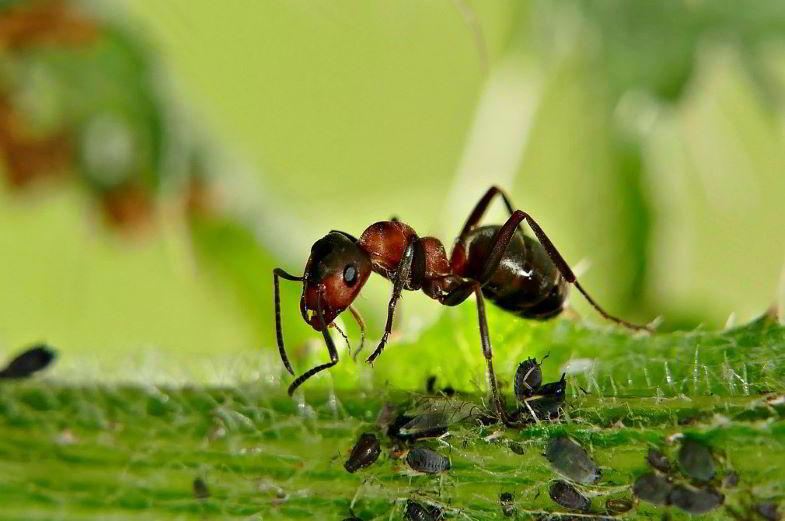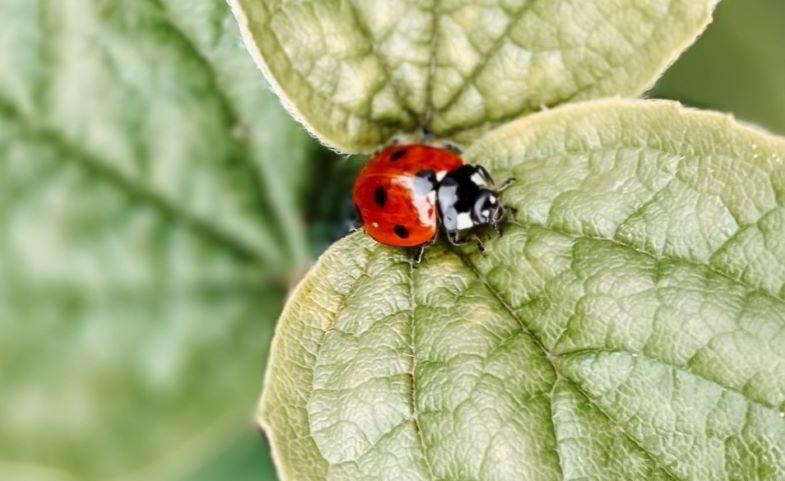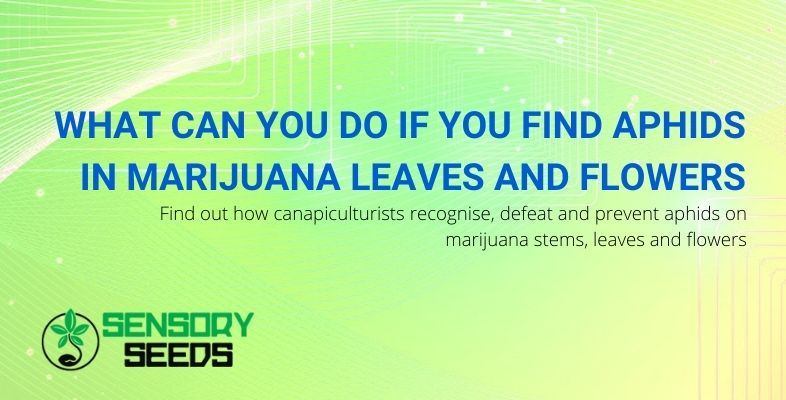Modified on: 20/09/2022
Find out how canapiculturists recognise, defeat and prevent aphids on marijuana stems, leaves and flowers
The presence of aphids can pose a serious threat to the health of marijuana plants.
Their presence can jeopardise the success of an entire harvest, whether it occurs a few weeks after planting cannabis seeds or when the plants are already large or even flowering.
These tiny pests feed on the plant sap, so knowing how to recognise and fight them is essential.
In this article, we will learn more about these little pests. Then, we will tell you what cannabis growers do to prevent their infestation and what they do to get rid of them to preserve the quality of marijuana flowers.
Let’s begin.


Aphids: small, hard to spot and skilled breeders
Apart from mould, viruses and other diseases, pests like aphids can also affect the quality of your marijuana flowers and, therefore, your harvest.
Why?
Aphids are pests that range in size from about 1 to 10 millimetres and can be green, black, white, or red, so they are difficult to recognise at first.
It is precisely where the problem arises: the presence of a few females that go unnoticed can lead to the emergence of many larvae in a short space of time, which in turn can procreate.
In short, it doesn’t take much to create an infestation!
As already mentioned, in the introduction, aphids feed on the sap of the plants, so it is essential for cannabis growers to constantly ensure that there are no aphids in the plantation from the moment the marijuana seeds are planted until the start of flowering (outdoor and indoor).
A pest attack during the first few weeks of plant growth could mean having to give up the whole plantation, while it would compromise months of hard work in the last weeks.
Let’s find out what the warning signs are for aphids.
Read also: Marijuana in flower: when does it start, and how long does it last indoors?
Ants, honeydew and curled leaves: these are the main signs of an aphid attack
Although recognising aphids can be tricky, experienced hemp growers know unmistakable signs that these tiny pests have visited their hemp plants.
Usually, aphids are located on the stems and behind the leaves and rarely in full view of the marijuana flowers. Still, while feeding, they release a sticky, thick substance: honeydew.
This delightful substance attracts ants and promotes the development of black mould, two factors that can significantly affect plant health.
But there is more.
When aphids suck the plant sap, the plant reacts by curling up its leaves, that end up turning yellow and wilt. Moreover, it is terrible for the developing the female hemp flower, which at some point draws its energy from the fan-shaped leaves!
In the face of all these signs, hemp growers must intervene promptly, although ideally they should do so before this last symptom manifests itself!
But what are the main remedies against aphids?
We will tell you about them in the next paragraph.


Remedies and prevention against aphids: how to protect plants from parasitic attacks
When aphids colonise hemp plants, it is essential to act as soon as possible, and there are several ways of doing this.
One of the most common ways used by hemp growers is pruning. It involves cutting off the areas of the plant damaged by the parasites, immediately throwing them in the waste bin so that they do not pose a danger to other plants.
After pruning, it is also common practice to wash the plant with water and vinegar, which helps to remove any aphids that may have remained on the plant.
Alternatively, organic insecticides can be used to get rid of aphids, i.e., compounds that usually contain essential oils, hydrolats and other substances that can induce the removal and/or death of many pests.
Other hemp farmers rely on the exclusive use of essential oils or vegetable oils such as canola, cotton, or soya.
When using these systems, however, if they are already present, it is essential to take the utmost care not to contaminate the hemp flowers, which would otherwise become unusable.
On the other hand, as a preventive system, it can be handy to introduce certain predatory insects such as ladybirds, Hymenoptera, hoverflies, etc.
In addition to this, it is also essential to ensure that the growing environment is not inviting to pests. Particularly in indoor cultivation, it is crucial to control the temperature and humidity of the environment and ensure that the air can circulate properly.
Read also: Drying cannabis: 3 things to know
To conclude
As we have seen, aphids can be very dangerous for marijuana plants.
Detecting their presence early on can be decisive for the future of a plantation, and preventing their appearance can save you from having to deal with many complex problems.
Of course, some remedies exist, but their effectiveness depends on when they are applied.
After this brief discussion and reminding you that growing cannabis is prohibited in the UK and in the majority of countries worldwide, we invite you to visit our SensorySeeds store.
In our online cannabis seeds shop, you can order feminised seeds, autoflowering seeds and many other top-quality seeds for collecting purposes.
We are waiting for you at Sensoryseeds.com!









